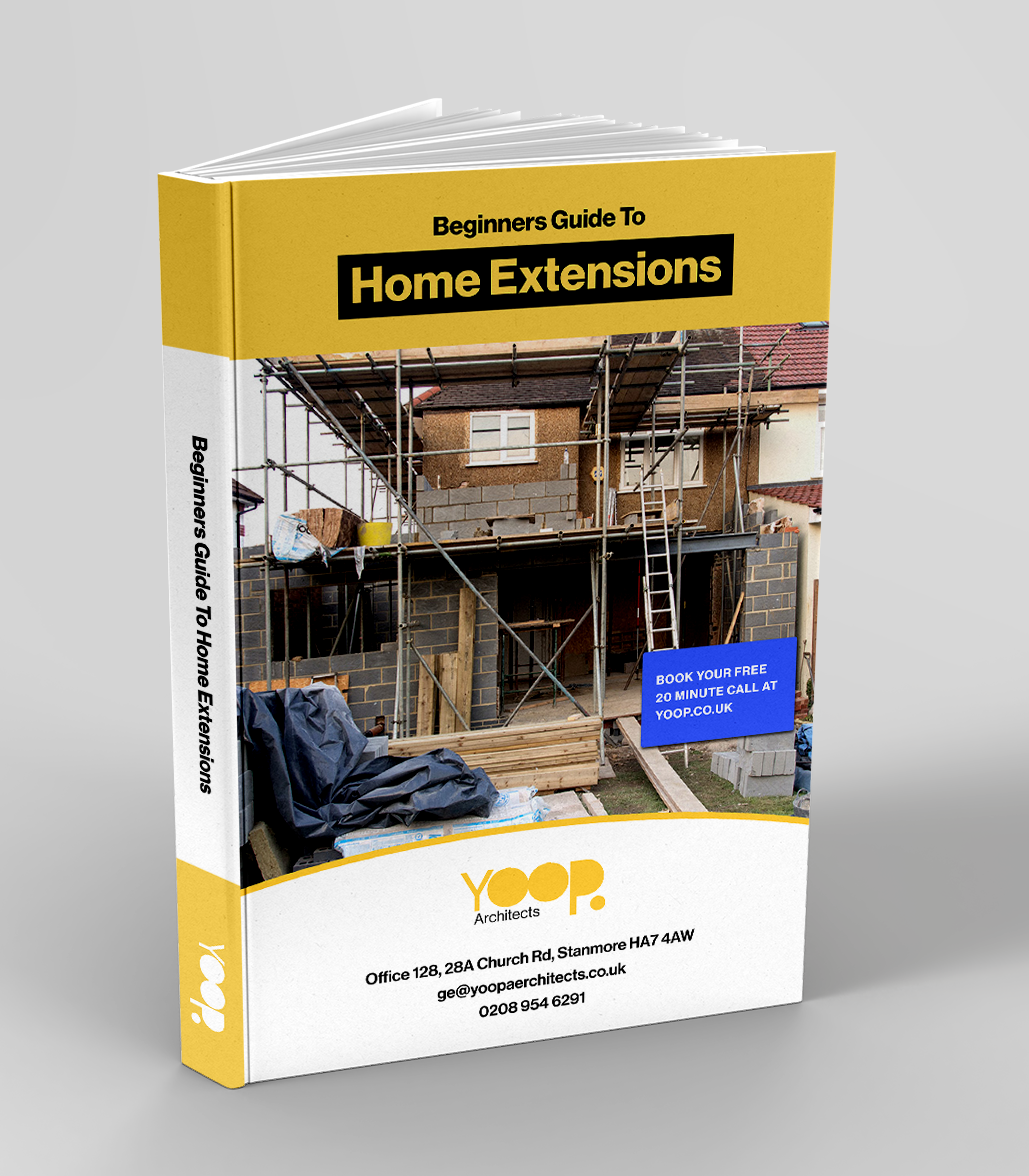House extension will not only give you more space to breathe in but is also a more favorable option than looking for a new home elsewhere. Whether you want to construct another room, pour more space to your kitchen, or add a home office, an organized home expansion can do miracles to your house. This beginner’s guide will take you through the important steps of planning, designing and constructing a home extension to ensure that you do not make wrong decisions at any given time.
1. Advantages of Home Extensions.
Choosing to extend your home comes with many more benefits as opposed to looking for a bigger house to live in. Here are some of the major advantages of getting a home extension:
Additional Living Space: Be it needing another bedroom, a bigger kitchen or an office, an extension opens up space to accommodate your requirements.
Increased Property Value: If well done, an extension will help leave one’s house in the higher and appreciating values making it a worthy investment.
Design Freedom: There are no restrictions. One can design and use the space exactly how one wishes.
No Moving Expenses: There will be no need to endure the tension and high costs of relocating Uganda; extending the present house will maintain the beloved region.
A two-storey extension increases the square footage of the ground floor, as well as the floor above it
2. Home Extension Categories
When it comes Guide to Home Extensions, one has to consider numerous factors such as the purpose of the extension, available funds, and how the extension fits into the existing structure of the house:
Ground Floor Extension
A ground floor extension is the most common form of extension as it adds space to the back or side of the house. It is great for extending a kitchen or making it open plan with the sitting room or for adding a study.
Benefits: It allows for the additional footprint on the lower levels without touching any of the upper levels. There is no wonder that it is very common in kitchen and living room extensions.
Two-Storey Extension
A two-storey extension increases the square footage of the ground floor, as well as the floor above it. This form of extension works best in cases when a number of rooms need to be added such as a new bedroom or a bathroom on the top floor.
Benefits: It extends your home’s dimensions in height and breadth as well which means that there is more space that can be used up on the different levels of the house.
Partial Wrap Around Extension
A partial wrap around extension refers to a type of building extension which in this case does more than simply extend the rear of the property. Rather like a traditional conservatory a partial wrap around extension combines two features providing a much larger living accommodating extension towards the sides and the rear of the house.
Benefits: There is usually ample area for creating a kitchen-diner, a living room, or an open-plan layout without any obstructions, which is very beneficial, and with it comes a lot of imagination.
Over-Structure Extension
This type of extension involves adding a further extension on top of an existing foundation element such as a floor garage or a flat ceiling structure.
Pros: Extensions to over-structure design are ideal if you have an idea of adding extra rooms like bedrooms or bathrooms without necessarily losing your garden space.
Conservatories and Orangeries
Conservatories or Orangeries can be used for introducing bright airy spaces that revolutionize the inside outside concept of the house. Such spaces are a blessing in the form of, for instance, a room for meals, a couch area, or even a sunbathing room.
Pros: Adds a wonderful separation from the house to the garden and enhances plenty of light, whilst offering a haven.
FREE GUIDE: Category: Loft Conversions
The Essential Guide to Something
Some information about the guide
Click the button below to download the guide now.
3. The process of applying Guide to Home Extensions
In most situations, extensions of buildings may be undertaken without the necessity for obtaining planning permission under what is known as Permitted Development Rights. This means you do not need the full planning consent. As long as the extension complies with certain prescribed conditions. So, in cases above certain extension thresholds, or in cases of developments in a heritage zone, or a listed structure, then planning permission must be sought.
Important restrictions for obtaining permission for extending and modifying existing construction include:
Length Limits: Certain building extensions to the rear of the building can be up to 6 meters long for terraced and semi-detached properties and up to 8 meters for detached ones without need for planning permission.
Height Restrictions: Extending parts cannot breach the apex of the existing roof and, the extension must not be more than 3 meters in height and within 2 meters of property boundary.
External Appearance: Any extension carried out should use materials similar to those of the existing building.
Before starting on the proposed work, one must always obtain information from the planning department in the area where the work is to be done or preferably hire an architect to design the work so that it adheres to the law and scope of work required.
4. Building Regulation Compliance
House extensions may not need planning permission but Building Regulations will govern every construction activity carried out. These guidelines seek to guarantee the safety of a building’s components and their optimal use of power among other factors. Some of the important topics of Building Regulations are.
Structural Integrity: As to the ability of the extension to carry its own weight plus any additional loads.
Fire: Exit and fire restriction materials to the appropriate areas within the extension must be provided.
Thermal: The low energy extension should comply with the current high thermal improvement standards.
Wiring and Plumbing: Wiring and plumbing systems should be fixed by legal authorities.
Ventilation: Ventilation should be provided in order to ensure air quality and also to control moisture levels.
At various milestones, building control officers will examine the works in progress.
5. Budgeting Guide to Home Extensions
Home extension costs may also vary based on its size complexity as well as materials. Below is approximate cost of meeting the outer requirements of an extension:
Single Storey Extension: 30,000 to 50,000
Two Storey extension (full height) – Start from 60,000 to 100,000 Plus (depending on degree of complexity)
Wrap-Around Extension. £70,000 – £120,000
Conservatories/orangeries between £10,000 – £30,000
Do not forget to budget for other external costs such as architect fees, planning applications, and regulatory approvals on building codes and interior designs.
If you do not want to have any surprises, build an additional budget (10-15% of the project amount) for such components as structural elements or price hikes in materials engineering additional costs.
6. Designing Guide to Home Extensions
The design phase is where you can let your imagination run riot and tweak the space to your heart’s content. Some of the issues that one has to consider are:
End Results of the Extension: Be it a kitchen, a bedroom or a living space, get to think about how the space is going to be occupied and how it integrates with your day to day activities.
Light: Because of the need to embrace the natural light as much as possible, it will be essential to include features such as large clear windows, skylights or even bi-fold doors that open up to your garden.
Inner arrangement: Envisage how the new area will fit together with other already existing areas of the house. Open-plan designs are common as people like that sense of space and flow.
Materials and Finishes: Use materials that will fit an already existing home whether they are bricks and tiles or interior finishes such as flooring and cabinetry.
Working with an architect or designer can ensure that the additional structure is a perfect fit in the house and the appropriate use and aesthetic features are met.
Share this…
7. THE IMPORTANCE OF ENGAGING PROFESSIONALS
Hiring professionals is an extremely important aspect of any successful home extension or renovation.
A professional team includes: Architects: Engaged in designing the extension and handling the planning issues. Contractors/Builders: Charged with the responsibilities of actual construction.
Structural Engineers: Whose role is to provide stability aspects of the extension.
Surveyors: Whose work involves managing the project and ensuring that there are no deviations from the Building Regulations. In the case of hiring such professionals, be very vigilant about their experience, educational background, and portfolios of completed projects provided.
Conclusion
A Guide to Home Extensions is an innovative option to create the extra space that you desire internally without relocating. Knowing the various forms of extensions, requirements for planning permission, Building Regulations, and cost, allows you to undertake the work with assurance. With good foresight and professional help, the extension of your house can be a worthwhile venture which improves not only your standard of living but also the value of your property.
FREE EXPERT HELP TODAY
Thinking of your dream home improvement or how to start your project?
Need your planning questions answered? Talk to an expert today.
Book a FREE 20 Minute Call with one of our home improvement Architects.
Connect with Yoop Architects…
Facebook
Twitter
LinkedIn


